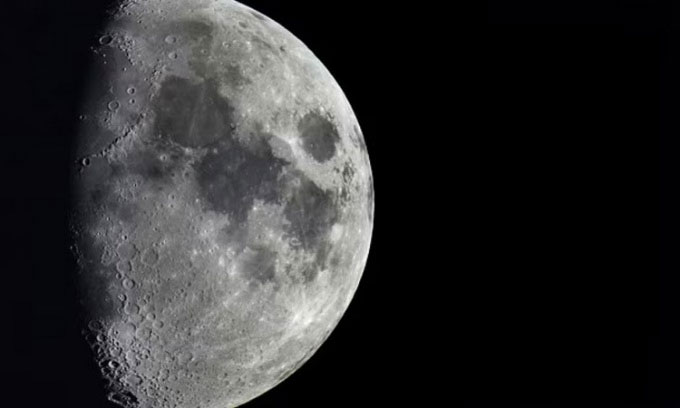The impact crater created by the rocket debris will strike the Moon on March 4, and is large enough to accommodate several trucks.
The large rocket debris will collide with the dark side of the Moon at a speed of 9,300 km/h, beyond the reach of telescopes. Space agencies may take weeks, or even months, to confirm the impact through satellite imagery. Experts believe that the object has been drifting in space since China launched the rocket nearly a decade ago. However, Chinese authorities deny this information. Scientists predict that the rocket debris will create a collision crater with a diameter of 10 to 20 meters, causing lunar dust to be thrown kilometers away across the barren surface filled with craters.

The rocket debris will collide with the dark side of the Moon. (Photo: NASA)
Space debris in low Earth orbit is relatively easy to track. Objects launched into deeper space are less likely to collide with any celestial body. Asteroid tracker Bill Gray first identified the debris as coming from a SpaceX rocket back in January. He later corrected this information a month later and confirmed that the mysterious object was not the upper stage of the Falcon 9 rocket that launched NASA’s deep space climate observatory into orbit in 2015.
According to Gray, it is likely that this is the third stage of the Chinese rocket that sent a sample collection capsule to the Moon and returned to Earth in 2014. However, Chinese authorities stated that this rocket stage had re-entered Earth’s atmosphere and burned up. The U.S. Space Command database also indicates that the Chinese rocket stage from the 2014 mission has never left orbit, but the agency could not determine which country the object set to collide with the Moon originated from. Jonathan McDowell, an astronomer at the Harvard-Smithsonian Center for Astrophysics, also supports Gray’s new conclusion.
The Moon has countless craters of various sizes. Due to the lack of atmosphere, the Moon is nearly incapable of shielding itself from incoming meteoroids and asteroids, sometimes even from spacecraft crashing down. Without an atmosphere, impact craters are not eroded and remain permanently. China has a rover on the dark side of the Moon, but the vehicle is too far away to detect the impact occurring north of the equator on March 4. NASA’s Lunar Reconnaissance Orbiter is also out of range. India’s Chandrayaan-2 spacecraft is also unlikely to fly over that area.


















































